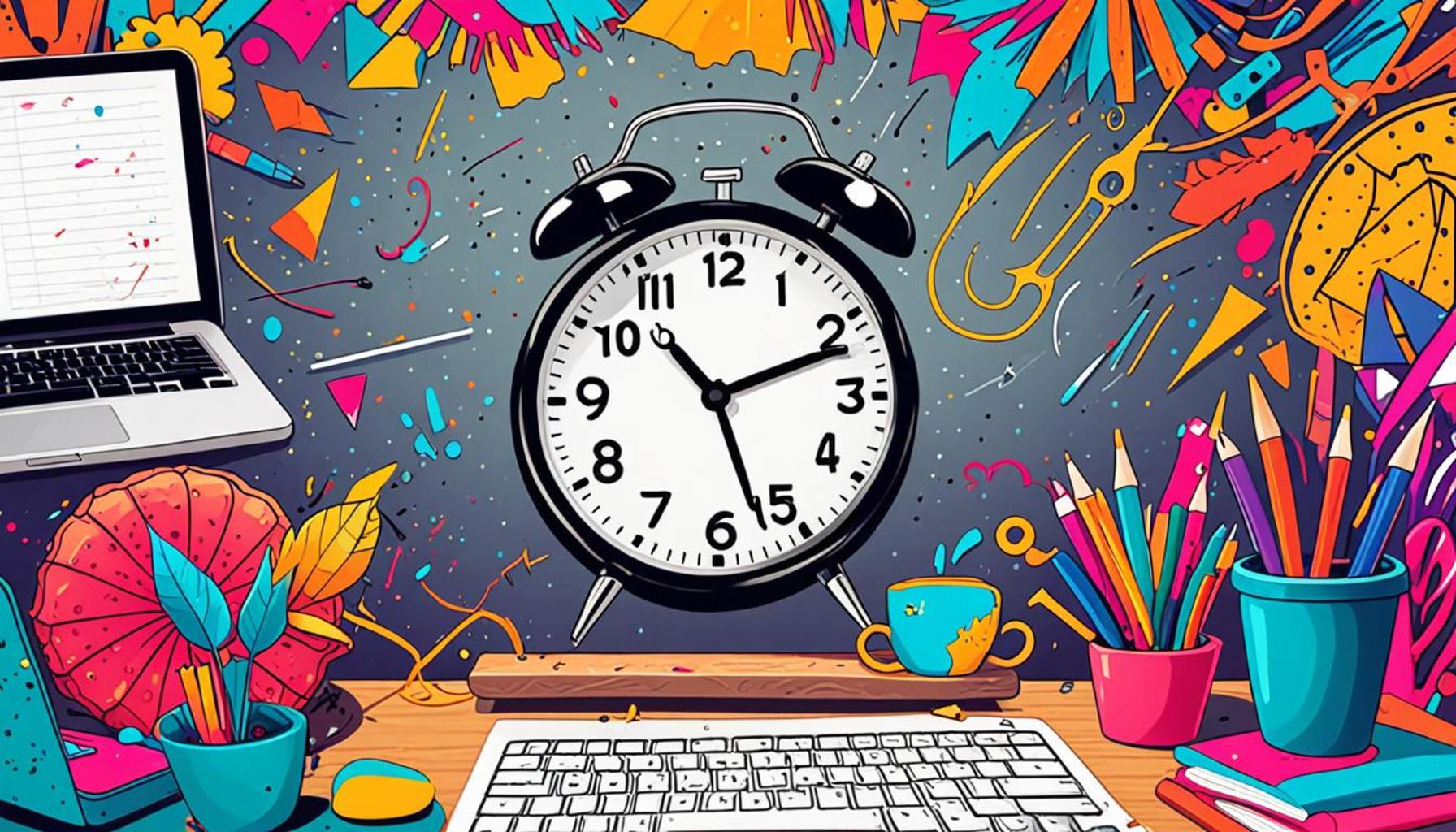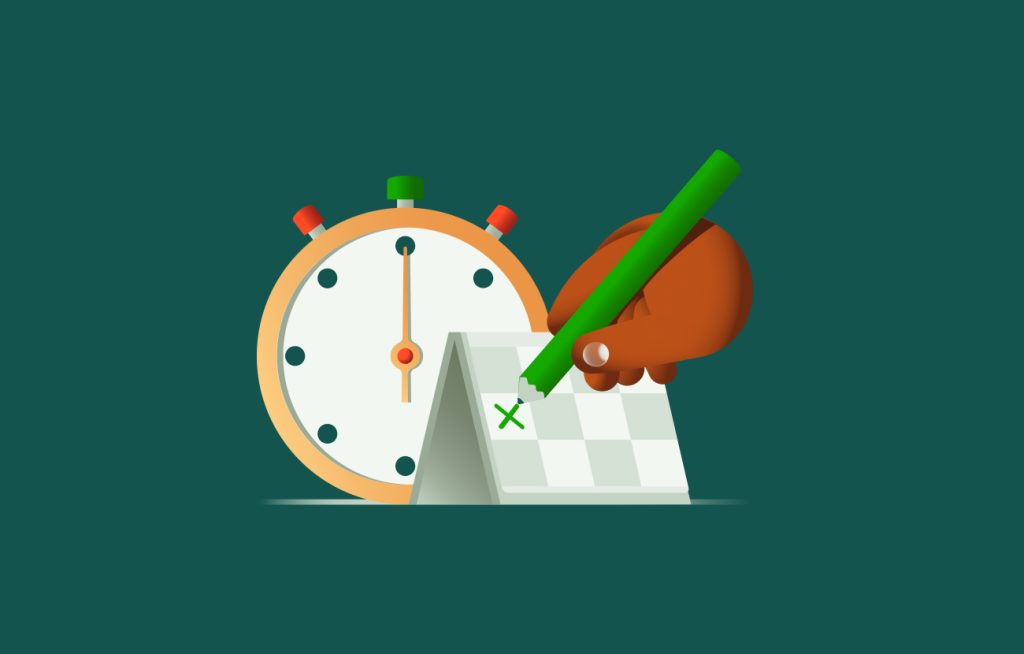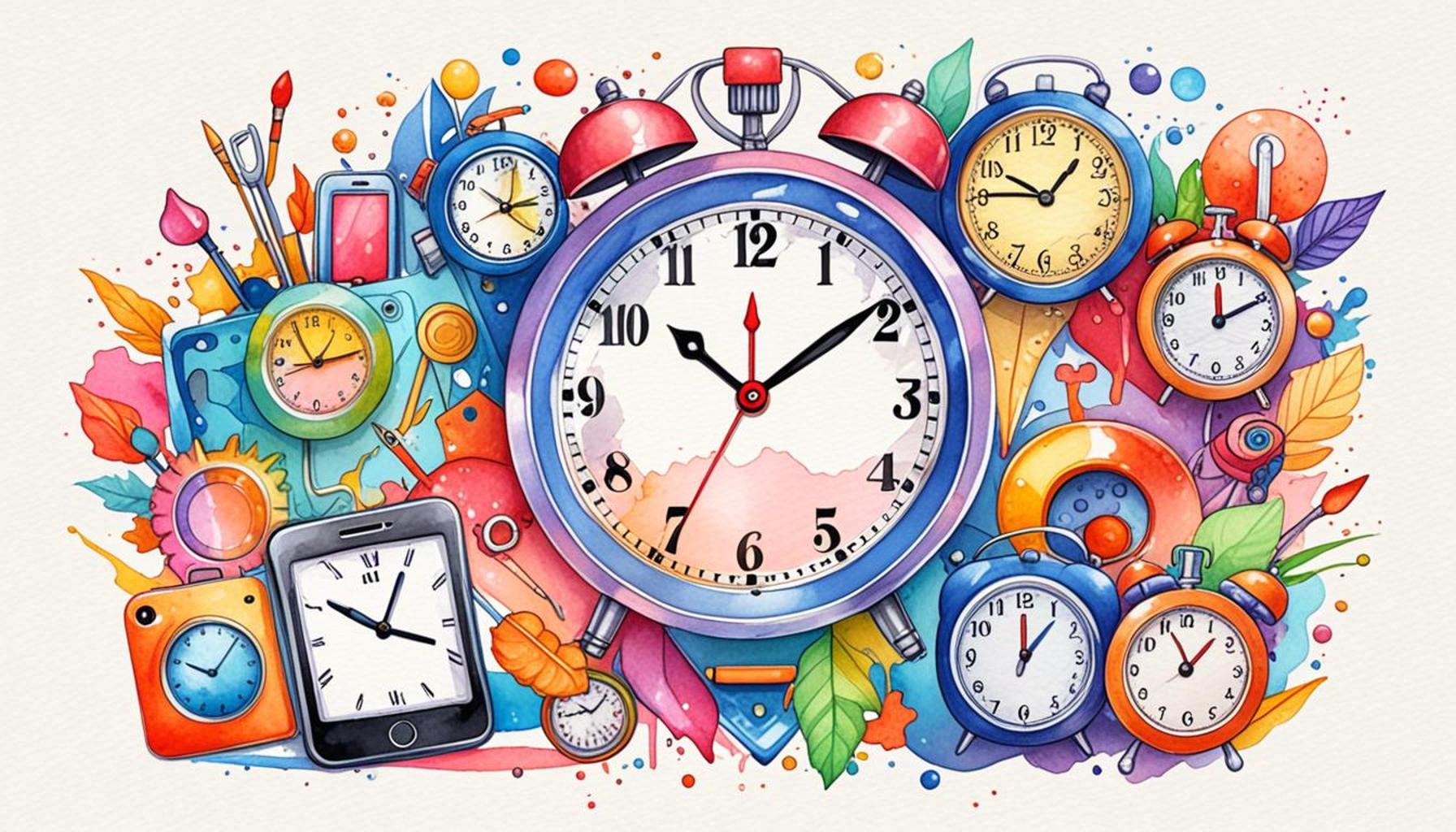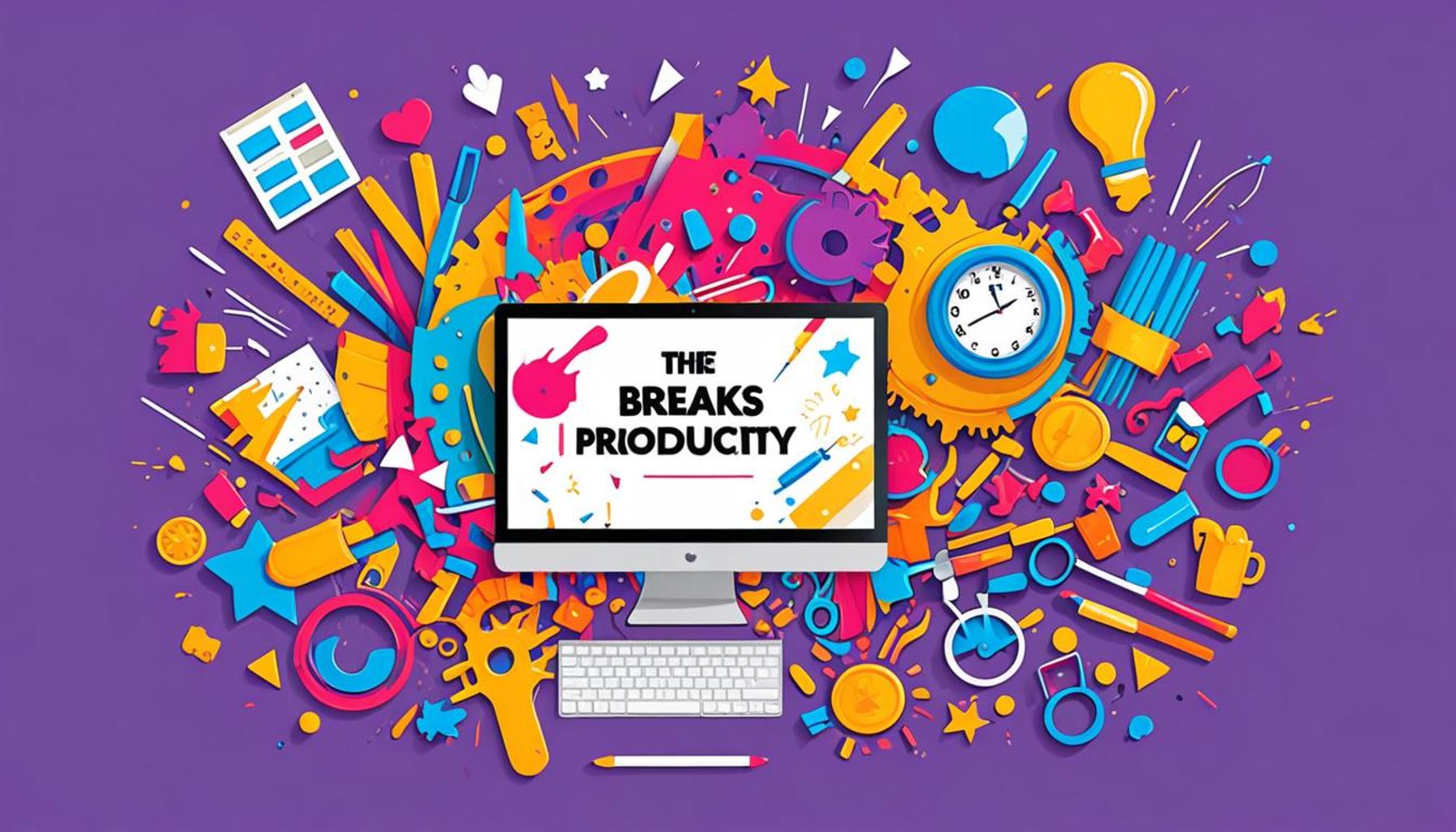Busy vs Productive Key Differences How to Boost Efficiency

Understanding the Distinction
In today’s fast-paced world, the terms busy and productive often become intertwined, yet they represent vastly different concepts. Many individuals equate being busy with achieving success, while real productivity lies in efficiency and goal completion. Recognizing the difference can lead to transformative changes in both personal and professional realms.
Key Differences Between Busy and Productive
To clarify these concepts, consider the following distinctions:
- Busy: Often characterized by:
- Constant activity without tangible results. For instance, someone may spend hours responding to emails or attending meetings yet leave the office without any concrete accomplishments.
- Filling time with tasks rather than achieving goals. This often manifests in the form of multitasking, where the individual bounces between various tasks, achieving little in any area.
- An overwhelming feeling of exhaustion. Many busy people report feeling fatigued by the end of the day, despite having accomplished very little that aligns with their personal or professional ambitions.
- Productive: Defined by:
- Focused effort toward specific outcomes. Productive individuals set clear objectives and dedicate their time and energy towards fulfilling them. For example, a project manager might allocate specific hours solely to strategizing a new campaign rather than getting distracted by less important tasks.
- Strategically prioritized tasks that align with goals. This involves understanding the hierarchy of tasks and focusing on those that deliver the most value. The Eisenhower Matrix is a popular tool that can help individuals categorize tasks by urgency and importance.
- A sense of accomplishment and energy. Productive individuals often feel invigorated after completing significant tasks, as their efforts yield visible results, such as meeting deadlines or exceeding targets.
Transitioning from a busy mindset to a productive one requires intention and strategy. Techniques such as time blocking—designating specific periods for different tasks—can be valuable in enhancing your daily efficiency. Additionally, setting SMART (Specific, Measurable, Achievable, Relevant, Time-bound) goals often helps people focus their energy on what matters most.
It’s essential to recognize that being busy does not equate to being effective. Successful professionals ensure that their efforts are not just about keeping their calendars full but rather about making impactful contributions that push them toward their long-term objectives. Understanding these differences can help you reframe your approach to tasks, ensuring you make the best use of your time and maximize your potential for achievement.
SEE ALSO: Click here to read another article

Identifying Your Work Style: Busy or Productive?
Understanding whether you fall into the category of being busy or productive can significantly affect your success and wellbeing. Being busy can often create an illusion of productivity, but distinguishing between the two is crucial for maximizing efficiency. Many professionals find themselves caught in the cycle of being busy while achieving little to no real progress toward their goals. In contrast, productive individuals prioritize their tasks to make meaningful contributions that align with their aspirations.
The Impact of a Busy Mindset
Those who consider themselves busy often engage in activities that keep them occupied but do not necessarily drive them toward tangible results. This can have various effects on both individual performance and the workplace as a whole:
- Burnout Risk: A packed schedule can lead to chronic stress and burnout. Research shows that long hours of perceived busyness without completion of essential tasks can exacerbate mental health issues, leading to decreased overall productivity.
- Quality vs. Quantity: Busy individuals may complete numerous tasks but often lack the depth needed for high-quality outcomes. This focus on quantity can distract from the essential work that drives success.
- Missed Opportunities: A focus on being busy can blind you to opportunities for innovation and improvement. When the emphasis is on just getting things done, there’s less time for reflection and strategic thinking.
The Value of a Productive Approach
Conversely, the productive mindset is characterized by intentionality and strategic thinking. Productivity can substantially enhance your professional landscape by:
- Setting Clear Goals: Productive individuals begin with a well-defined set of goals. By understanding their objectives, they can align their tasks accordingly, ensuring that each action moves them closer to success.
- Implementing Efficient Time Management: Effective time management techniques, such as the Pomodoro Technique or time blocking, allow individuals to hone in on their work during focused intervals. This breaks the cycle of constant busyness and fosters deep work.
- Reflecting and Adjusting: A productive mindset encourages regular reflection on one’s accomplishments and obstacles. This ongoing assessment creates a dynamic approach to work, allowing for adaptations and enhancements in workflow.
Both work styles can coexist, but understanding where you stand helps drive better performance. By recognizing signs of being busy and actively choosing to adopt a productive approach, you can start building habits that not only improve your work life but also enhance overall satisfaction. Identifying and nurturing productive behaviors can ultimately lead to an enriching and fulfilling career.
| Key Differences | Impacts on Efficiency |
|---|---|
| Focus on Tasks | Productivity involves prioritizing important tasks that align with long-term goals, increasing overall effectiveness. |
| Value of Time | Being busy may lead to a false sense of accomplishment, while productivity maximizes time efficiency, leading to satisfactory results. |
| Quality vs. Quantity | A productive approach often yields higher quality outcomes over simple task completion, enhancing workplace satisfaction. |
| Mindset | Cultivating a growth mindset helps individuals focus on developmental activities, differentiating from merely keeping busy. |
Understanding the nuances between being busy and being productive is crucial for enhancing efficiency in various aspects of life. Embracing these key differences can empower individuals to become more intentional with their time and efforts. For instance, fostering a growth mindset not only contributes to personal development but also opens pathways to innovative solutions. The essence lies in recognizing that true productivity isn’t just about the volume of work completed but about working smarter, aligning actions with meaningful objectives. This shift in perspective not only boosts efficiency but ultimately leads to a more fulfilling and balanced professional and personal life. Exploring further into methods and strategies can provide added insights into how these principles can be effectively applied.
SEE ALSO: Click here to read another article
Strategies to Transition From Busy to Productive
Making the shift from a busy work style to a productive one does not happen overnight. It requires intention, strategic changes in approaches, and sometimes a re-evaluation of your priorities. Here are several effective strategies to enhance your efficiency by embracing a productive mindset.
Prioritize Tasks Using the Eisenhower Matrix
The Eisenhower Matrix is a powerful tool that helps you categorize tasks based on urgency and importance. By placing tasks into four key quadrants:
- Urgent and Important: These tasks should be addressed immediately.
- Important but Not Urgent: Plan time to work on these tasks strategically.
- Urgent but Not Important: Delegate these tasks when possible.
- Neither Urgent nor Important: Eliminate or minimize time spent on these tasks.
Using this matrix, professionals can focus on what truly matters, reducing the overwhelming feeling of constant busyness while ensuring alignment with long-term goals.
Embrace Technology for Efficiency
From project management software like Trello and Asana to time-tracking tools such as RescueTime, leveraging technology can streamline workflows and minimize time spent on menial tasks. In a survey conducted by the American Psychological Association, over 60% of professionals reported that technology significantly enhanced their ability to manage workload and deadlines effectively. Consider integrating tools that automate repetitive tasks, allowing you to allocate more time towards critical projects.
Establish Boundaries and Say No
One of the hallmarks of a busy worker is an inability to say no, leading to overcommitment and diluted focus. Learning to establish clear boundaries is essential for enhancing productivity. This includes:
- Defining Work Hours: Set a clear start and end time for your workday to prevent overworking and enhance work-life balance.
- Saying No: Politely decline tasks or commitments that do not align with your priorities. This protects your time and energy for projects that drive growth.
According to a study published in the Harvard Business Review, individuals who learn to say no effectively report feeling more in control of their schedules and experience increased job satisfaction.
Adopt Mindfulness Practices
Incorporating mindfulness can help enhance focus and create a more intentional work environment. Techniques such as deep breathing, brief meditation sessions, or even mindful walking during breaks can help clear mental clutter, allowing greater concentration on the tasks at hand. Research suggests that mindfulness not only reduces stress but also enhances cognitive flexibility and decision-making skills, essential for a productive mindset.
By implementing these strategies, you can effectively transition from a busy state to a more productive workflow. The emphasis is on fostering habits that encourage meaningful activity rather than merely filling time with tasks. Taking the time to nurture productivity can lead to professional satisfaction and overall well-being.
CHECK OUT: Click here to explore more
Conclusion: Embracing Productivity for Enhanced Efficiency
In today’s fast-paced world, discerning the key differences between being busy and being productive is paramount for anyone looking to optimize their efficiency. While a busy schedule often creates a facade of achievement, true productivity is characterized by meaningful progress and tangible outcomes. By adopting strategic practices such as task prioritization, leveraging technology, setting boundaries, and embracing mindfulness, individuals can cultivate an environment that promotes not just activity but effective results.
As evidenced by various studies, including those from the American Psychological Association and the Harvard Business Review, those who learn to focus on what matters—rather than filling their days with unproductive busyness—report lower stress levels and higher job satisfaction. Furthermore, mindfulness practices enhance cognitive function, further enabling a shift from merely keeping busy to achieving substantial milestones.
Ultimately, making a conscious effort to transition from busy to productive is not only beneficial for individual well-being but also enhances the dynamics within organizations. As professionals embrace productivity over mere busyness, they will uncover greater fulfillment in their work, paving the way for sustained success and innovation. In a world that’s often about doing more, let us aspire to do better.
In conclusion, re-evaluating our perceptions of productivity and implementing the discussed strategies can catapult us into a more efficient and rewarding workplace. The results speak for themselves: by prioritizing productivity, we elevate both our work and our lives.



